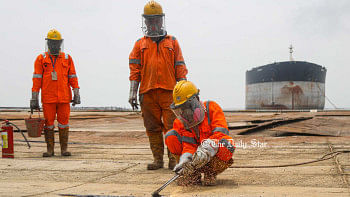A unique solution to three environmental problems

During a recent trip to Bermuda, what impressed me most about this island nation were the tidy pastel houses with stucco exteriors and artistically built brilliant white roofs with grooves perfectly placed amid the palm trees for which the island is famous. The white roofs – signature pattern of the island's architecture – are built not only for aesthetic reasons but also for some distinct purposes.
Despite an idyllic location in the Atlantic Ocean, Bermuda and its 61,000 plus inhabitants face two stark environmental challenges. First, Bermuda is frequently battered by killer hurricanes, whose strong winds can tear houses apart and blow roofs away. As recent as October 13, 2016, Hurricane Nicole roared across Bermuda, pummelling the island with winds up to 115 mph. The last major one was Fabian which battered Bermuda in September of 2003 with sustained winds in excess of 150 mph.
Second, there are no natural freshwater rivers or lakes on the island. Moreover, the island is set on porous limestone that often results in wells and water ponds collecting brackish salt water that is unsafe to drink. Because of this, residents must find other ways to get drinking water.
The white roofs and the stucco structures are an elegant solution to both the problems. To protect properties from destruction by powerful hurricanes, most of the homes on the island are constructed using a locally quarried limestone called "Bermuda Stone." Some modern structures are built of concrete blocks. Also, Bermuda's building codes require homes to be built with walls at least eight inches thick and be able to withstand 150 mph gusts and sustained winds of 110 mph.
The solution to the freshwater problem is the roof. Made of limestone blocks and sliced into individual slates, the roofs are fashioned in step-like sloped surfaces with gutter ridges to collect rainwater, the most precious liquid in Bermuda. The ridges direct the water through a long concrete trough to a pipe that filters and funnels it into a tank buried alongside the house so that it can be pumped and used throughout the household.
In order to sanitise the rainwater as it runs off into the holding tank, the slates are coated with several layers of nontoxic white paint – a modern replacement for traditional whitewash. Before applying the paint, the roof has to be washed with a half-and-half solution of regular unscented household bleach and water.
The white colour helps disinfect the surfaces and water. Additionally, they keep the homes cooler during the hotter months, reducing the need for energy-guzzling air conditioners. The roofs must be cleaned of bird droppings and repainted every alternate year. Water tanks must be disinfected once every three months and cleaned every six years to remove any accumulation of sludge.
Building codes require residents to convert at least 80 percent of their roof's surface into a catchment area. Furthermore, a typical underground tank must have a capacity of 68,000 litres. Should there be little or no rainfall for a prolonged period of time, water in the tank is considered enough to last for several weeks.
Around 70 percent of the water used in the island's household comes from roofs. Still, demand for water outstrips supply by about 20 percent during peak tourist seasons. The shortfall is supplemented by water rationing and through desalinisation and pumping from underground layers of water that sit atop seawater. And often times, people will use salt water wells as a water supply for things such as flushing a toilet in order to save drinking water.
Since the most important part of a Bermudian's home is the roof, the owners, architects and developers scramble to the rooftop for a liberal dousing of the surface with Bermuda's second most precious liquid – black rum, after a new building's roof is declared watertight.
It is estimated that more than 500,000 people in the Caribbean islands depend at least in part on rooftop rainwater catchment systems. Some countries in Central and South America, such as Honduras, Brazil and Paraguay, also use rainwater harvesting as an important source of water supply for domestic purposes, especially in rural areas. Even developed countries like Germany and Australia harvest rainwater and in New Zealand, communities away from the larger towns and cities routinely rely on rainwater collected from roofs as the only source of water for all household activities.
Availability of clean and safe drinking water has been an issue plaguing the rural areas of Bangladesh for ages. The ingenuity of the Bermudians can be emulated by the Bangladeshis too, thereby, solving the drinking water problem.
According to the article "Economic comparison of white, green, and black flat roofs in the United States" published in the March 2014 volume of Energy and Buildings, researchers at the Lawrence Berkeley National Laboratory of California note that a simple white roof reflects three times the sunshine as a green rooftop garden. Thus, by absorbing less sunlight, white roofs offset a portion of the warming effect from greenhouse gas emissions. In fact, they presented evidence that a 1,000 square foot area of rooftop painted white has about the same one-time impact on global warming as cutting 10 tons of carbon dioxide emissions.
Clearly, the white roofs and limestone or concrete walls are unique solutions to three environmental problems – provide drinking water, withstand the wrath of hurricanes and mitigate global warming.
The writer is Professor of Physics at Fordham University, New York.

 For all latest news, follow The Daily Star's Google News channel.
For all latest news, follow The Daily Star's Google News channel. 



Comments